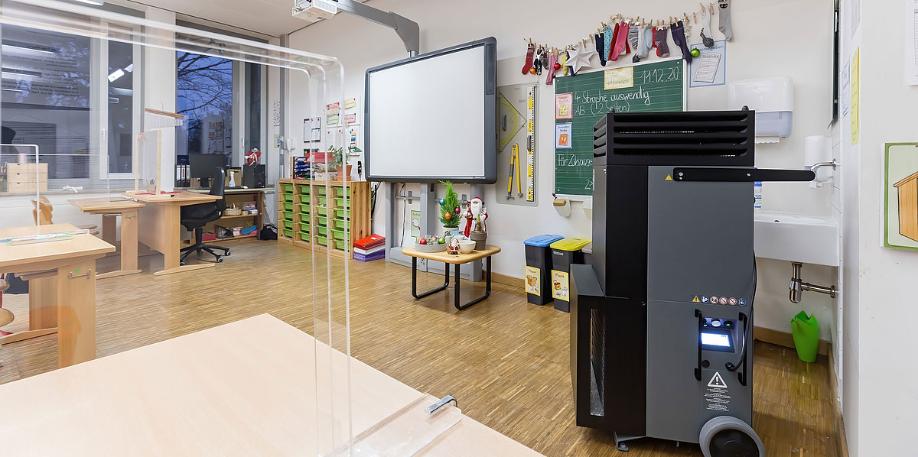What requirements must meet air purifiers

In the Western world, people spend between 80% and 90% of their time indoors, especially in the fall and winter months. Therefore, indoor air quality plays a major role in people's health and well-being. Against the background of the Corona situation, the aspect of sufficient ventilation of indoor spaces becomes a central issue for the health of the people who spend time there.
Continuous, effective air exchange is best ensured by a stationary ventilation and air-conditioning system. Such systems are still the exception, for example, in residential interiors, at schools or daycare centers, and can only be retrofitted with structural and technical effort and after obtaining building code approval. This costs time, which is often not available in the current pandemic.
The task is to replace "stale" room air with supply air from outside and thus reduce the virus load. Where there are no permanently installed air-handling systems, windows should be used for rapid and effective ventilation. Where ventilation via windows is not sufficient, the use of mobile air purifiers (MLR) is a sensible measure. However, when MLR are used, ventilation must still be carried out regularly (at schools during every lesson break), even if this is only possible to a limited extent. This is because MLRs do not contribute to successful ventilation (removal of CO2, humidity, etc.) from indoor spaces.
What requirements must mobile air purifiers meet?
The VDI-EE 4300-14 "Measurement of indoor air contaminants - Requirements for mobile air purifiers to reduce aerosol-borne transmission of infectious diseases" specifies requirements and test criteria. Air purifiers that meet these conditions are suitable for effective reduction of virus contamination in a real room.
The following aspects are considered in particular in VDI-EE 4300 Sheet 14:
Set-up positions in the room should be according to the manufacturer's instructions:
-
Filter classes such as HEPA H13 (according to EN 1822 plus pre-filtering e.g. ISO ePM10 50 % according to ISO 16890), combinations of ePM1>50 % and ePM1>80 % according to ISO 16890 (formerly F7 + F9) or equivalent for units with filters; filters of class H14 are not required for the premises mentioned above.
-
Security and protection against vandalism
-
for UVC air sterilizers: Avoidance of UV radiation outside the device
-
Air flow rate corresponding to at least 4 times the air change rate per hour; This achieves an air flow rate that is sufficiently high to pass the entire room air through the units within a sufficiently short time.
-
Noise development at the required air volume flow (sound pressure level) according to ASR 3.7 (e.g. for schools sound pressure level less/equal 35 dB(A))
-
Comfort aspects (avoiding drafts)
-
Cleaning performance for filtering devices (efficiency of filtration > 90%, testing in the laboratory under conditions similar to those in real rooms)
-
Minimum dose for UVC air sterilizers with single passage ≥ 70 J/m².
-
Avoidance of undesirable by-products (especially ozone in processes with ionization/plasma, UV-C); the residual discharge of ozone into indoor air should be below 10 μg/m3
Proper installation required
It is necessary to take into account local conditions (air flow profiles, structural installations, etc.) which influence particle separation or inactivation by alternative processes. The device- and technology-specific values to be achieved by a suitable air purifier are summarized in a separate section
section. In addition to these values, the installation of the mobile air purifiers on site is also discussed. Only when properly installed can a reliable and effective virus reduction be achieved in practice.
Author:
Dr. Elisabeth Hösen-Seul
VDI/DIN-Commission on Clean Air (KRdL) - Standards Committee